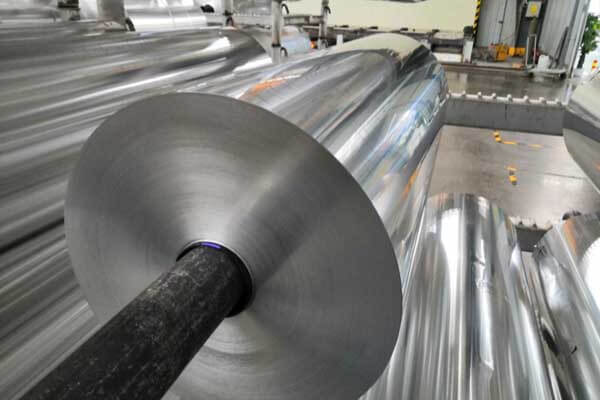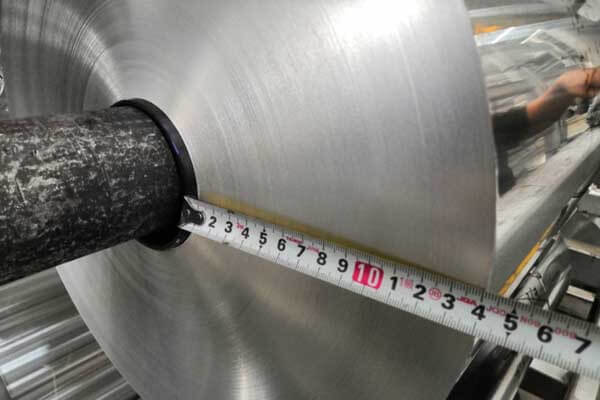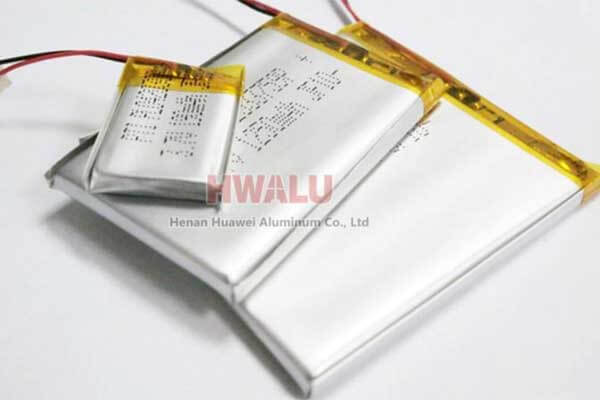Introduction
In the rapidly evolving world of energy storage, อลูมิเนียมฟอยล์มีความโดดเด่นในฐานะองค์ประกอบพื้นฐานในการผลิตแบตเตอรี่, โดยเฉพาะแบตเตอรี่ลิเธียมไอออน. ที่หัวเว่ยอลูมิเนียม, เราเชี่ยวชาญในการผลิตอลูมิเนียมฟอยล์คุณภาพสูงที่เหมาะกับการใช้งานกับแบตเตอรี่. ผลิตภัณฑ์ของเราได้รับการออกแบบมาเพื่อเพิ่มอายุการใช้งาน, ประสิทธิภาพ, และประสิทธิภาพของแบตเตอรี่, catering to a wide range of industries including automotive, อิเล็กทรอนิกส์, and renewable energy systems.
 Aluminium battery foil
Aluminium battery foilWhy Aluminum Foil for Batteries?
Aluminum foil serves as a critical material in the battery structure, acting primarily as the current collector for the cathode in lithium-ion batteries. Its inherent properties, such as high conductivity, ความยืดหยุ่น, และทนทานต่อการกัดกร่อน, make it an ideal choice for facilitating efficient electron flow, enhancing battery life, and improving overall performance.
Advantages of Aluminum Foil in Battery Applications:
- High Conductivity: Ensures efficient electron flow within the battery.
- น้ำหนักเบา: Contributes to the overall reduction in battery weight.
- ความต้านทานการกัดกร่อน: Enhances durability and battery life.
- Flexibility: Allows for versatile battery design and form factors.
Aluminum Foil Alloy Models and Specifications
ที่หัวเว่ยอลูมิเนียม, we offer a variety of aluminum foil alloy models, each tailored to meet the specific demands of battery manufacturing. Below is a detailed table showcasing our primary alloy models, their specifications, and applications.
Table 1: Alloy Models and Specifications
| โมเดลอัลลอยด์ | ความหนา (ไมโครเมตร) | ความกว้าง (มม) | แอปพลิเคชัน | คุณสมบัติ |
|---|
| 1060 | 10 – 20 | 100 – 1500 | Standard Li-ion Batteries | มีความบริสุทธิ์สูง, excellent conductivity |
| 1070 | 10 – 20 | 100 – 1500 | High-capacity Li-ion Batteries | Enhanced conductivity and flexibility |
| 1235 | 10 – 20 | 100 – 1500 | Consumer Electronics | ขึ้นรูปได้ดี, ความต้านทานการกัดกร่อน |
| 3003 | 10 – 20 | 100 – 1500 | Power Banks, Electric Vehicles | Higher mechanical strength, excellent thermal properties |
| 8011 | 10 – 20 | 100 – 1500 | Specialty Batteries (High Temp.) | Optimal thermal performance, ความต้านทานการกัดกร่อน |
ตัวเลือกการปรับแต่ง
Understanding that battery manufacturers have diverse needs, Huawei Aluminum offers customization options for aluminum foil, including but not limited to varying thicknesses, widths, and mechanical properties. Our team works closely with clients to develop solutions that meet their specific requirements, ensuring optimal performance and compatibility with their battery designs.
 Lithium-ion Battery Foil
Lithium-ion Battery FoilQuality Control and Standards
Quality is at the heart of everything we do at Huawei Aluminum. ของเรา aluminum foil for battery production undergoes rigorous testing and quality control processes to ensure it meets the highest standards. We adhere to international quality standards, including ISO 9001, ASTM, and EN standards, to deliver products that our customers can trust.
Testing Procedures Include:
- Chemical Composition Analysis
- Mechanical Property Testing
- Thickness and Width Verification
- Surface Quality Inspection
Applications of Aluminum Foil in Batteries
Aluminum foil is versatile and finds applications in various types of batteries:
- Lithium-ion Batteries: The primary application, where it serves as the cathode current collector.
- Supercapacitors: Used in the electrodes of supercapacitors for energy storage.
- Flexible and Wearable Electronics: Ideal for new-age, flexible battery formats.
- Electric Vehicles (EVs): Critical in the manufacture of EV batteries, contributing to lighter and more efficient battery packs.
 อลูมิเนียมฟอยล์สำหรับแบตเตอรี่
อลูมิเนียมฟอยล์สำหรับแบตเตอรี่Sustainability and Recycling
Huawei Aluminum is committed to sustainability and environmental responsibility. อะลูมิเนียมรีไซเคิลได้สูง, and we advocate for and practice recycling processes that reduce the environmental impact of our manufacturing operations. By choosing aluminum foil for batteries, manufacturers are not only opting for a high-performance material but also contributing to a more sustainable and eco-friendly production cycle.
